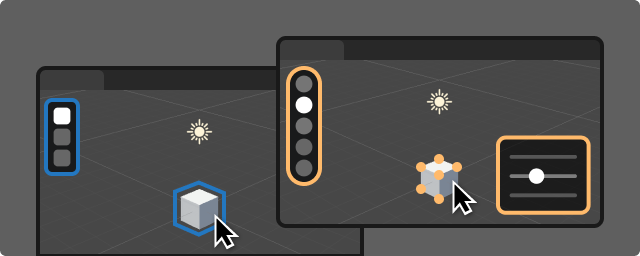Contextual Tooling
A framework for building Editor tools which automatically presents matching tools and features for the work at hand, enabling user customization of layout, and providing a robust API for internal and external developers.

- Guiding and helping with implementation,
- Discussing additions or changes to the framework,
- Addressing bugs as priority items













